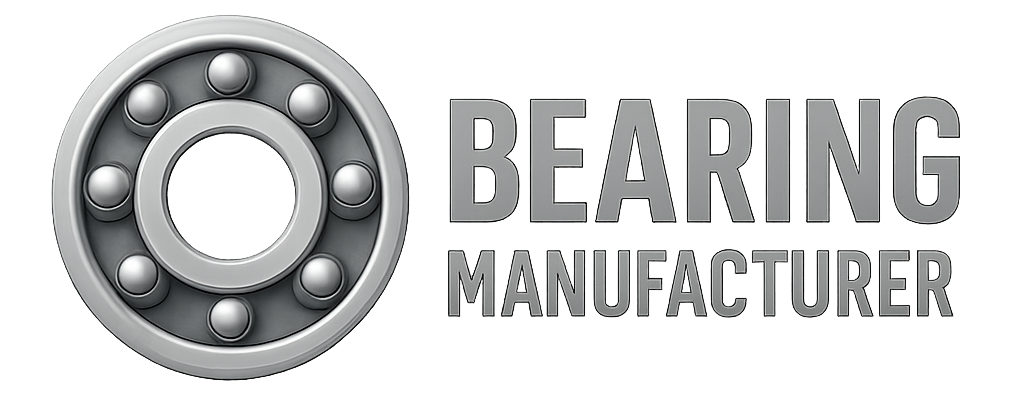What Is Bearing Tolerance?
Bearing tolerance refers to the permissible variation in a bearing’s dimensions from its nominal (theoretical) size. These tolerances ensure the bearing fits precisely within its housing and on its shaft while maintaining optimal performance.
In engineering practice, no bearing can be manufactured to absolute precision. Therefore, international standards like ISO 492 (for metric bearings) and ABEC (primarily used in the U.S.) define acceptable limits for dimensional variation. These limits cover:
-
Bore diameter
-
Outer diameter
-
Width
-
Roundness
-
Running accuracy (e.g., deviation in rotation)
The tighter the tolerance, the more precise and higher-performing the bearing—but also more expensive to produce.
Common Bearing Tolerance Standards
1. ISO Tolerance Classes
The ISO 492 standard categorizes bearing tolerances into different classes:
| ISO Class | Precision Level | Typical Application |
|---|---|---|
| Normal | Standard (lowest precision) | General machinery, automotive systems |
| Class 6 | Higher precision | Industrial motors, medium-speed spindles |
| Class 5 | High precision | High-speed electric motors, pumps |
| Class 4 | Ultra-high precision | CNC spindles, robotics, measuring equipment |
| Class 2 | Highest precision | Aerospace, precision instruments |
Note: Lower ISO class numbers indicate higher precision.
2. ABEC Tolerance Classes (Primarily for Inch Bearings)
ABEC (Annular Bearing Engineers’ Committee) standards are commonly used in North America and are part of the ANSI/ABMA standard. ABEC tolerance classes include:
-
ABEC 1 – Basic industry standard
-
ABEC 3 – Better than average
-
ABEC 5 – High precision
-
ABEC 7 – Very high precision
-
ABEC 9 – Ultra-precision
| ABEC Class | Precision (Compared to ISO) | Typical Use |
|---|---|---|
| ABEC 1 | ≈ ISO Normal | Fans, household equipment |
| ABEC 3 | ≈ ISO Class 6 | Electric motors |
| ABEC 5 | ≈ ISO Class 5 | Machine tool spindles |
| ABEC 7 | ≈ ISO Class 4 | Aerospace systems, medical instruments |
| ABEC 9 | ≈ ISO Class 2 | Ultra-precise scientific applications |
⚠ ABEC only defines dimensional tolerances, not load capacity, material quality, lubrication, or noise level.
Why Bearing Tolerance Matters
Precision in bearing dimensions directly affects performance factors such as:
-
Fit between the shaft and housing
-
Speed capability
-
Noise level and vibration
-
Load distribution
-
Heat generation
-
Bearing life
For example:
-
A tight tolerance bearing (like ISO Class 4 or ABEC 7) offers better rotational accuracy and minimal vibration—ideal for CNC or high-speed spindles.
-
A standard tolerance (ISO Normal or ABEC 1) is sufficient for non-critical applications like conveyors or fans.
How to Read a Bearing Tolerance Chart
A typical bearing tolerance chart outlines allowable deviations for key dimensions at different tolerance classes. Here’s how to interpret it:
Example: 6205 Ball Bearing
| Parameter | Nominal Value (mm) | ISO Class 6 Tolerance (µm) |
|---|---|---|
| Bore diameter (d) | 25 | +0 / -8 |
| Outer diameter (D) | 52 | 0 / -13 |
| Width (B) | 15 | 0 / -120 |
In this case, a Class 6 bearing with a 25 mm bore may actually measure between 25.000 and 24.992 mm.
Bearing Fit and Tolerance Relationship
The combination of shaft and housing tolerances with bearing tolerances determines the fit type:
-
Loose Fit: Easy assembly, allows some movement. Ideal for applications with thermal expansion.
-
Transition Fit: Slight interference or clearance depending on tolerance overlap.
-
Interference Fit (Tight Fit): Secure mounting. Prevents movement under high loads or rotation.
⚙ Engineers must select the appropriate shaft and housing tolerances (e.g., h6, j5, k5, etc.) to ensure the desired bearing fit and avoid fretting, noise, or premature wear.
Choosing the Right Tolerance Class
When selecting a tolerance class, consider:
| Application Type | Recommended Tolerance Class |
|---|---|
| Agricultural Machinery | ISO Normal / ABEC 1 |
| Electric Motors | ISO 6 / ABEC 3 |
| Automotive Gearboxes | ISO 5 / ABEC 5 |
| CNC Machine Spindles | ISO 4 or 2 / ABEC 7 or 9 |
| Aerospace & Metrology | ISO 2 / ABEC 9 |
Over-specifying tolerances can lead to unnecessary costs without added benefit, while under-specifying can cause performance failures.
